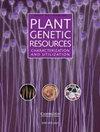弯曲蒲公英野生居群的栽培潜力:形态与生化变异
IF 0.7
4区 生物学
Q3 PLANT SCIENCES
Plant Genetic Resources: Characterization and Utilization
Pub Date : 2023-07-17
DOI:10.1017/s1479262123000436
引用次数: 0
摘要
普通蒲公英(Taraxacum campylodes G.E.Haglund)以其药用特性和无毒、高营养的可食用植物而闻名。尽管这种草药大多是在野外采集的,但食品和制药行业更喜欢种植的植物材料。种植提供了实现可预测产量的可能性,确保植物和产品的植物学特征可以根据有机或生物动力标准进行认证;因此,对驯化的兴趣正在增长。由于农业系统中蒲公英栽培研究的缺乏,目前的研究重点是确定拉脱维亚有机农业系统中13个野生种群的数量和质量特征。Gluda、Priekuli、Mundigciems、Marupe和TA008的干根质量最高(>100 g /株),是Nouvelle的2倍以上。绿原酸(CHA)和菊苣酸(CCA)含量最高,分别为0.12%和0.15%。Marupe和mundigciem的野生种群具有较高的平均根重以及相对较高的CHA和CCA含量,适合于商业种植。本研究探讨了在有机耕作系统中培育野生蒲公英种群的可行性。结果显示,种群内部和种群之间存在高度差异;因此,蒲公英野生种群可用于驯化、育种和选择最适合制药或食品工业的材料。本文章由计算机程序翻译,如有差异,请以英文原文为准。
Cultivation potential of Taraxacum campylodes G.E.Haglund wild populations: morphological and biochemical variation
The common dandelion (Taraxacum campylodes G.E.Haglund) is known for its medicinal properties and as a non-toxic, highly nutritious edible plant. Even though the herb is mostly collected in the wild, the food and pharmaceutical industries prefer cultivated plant material. Cultivation offers the possibility to achieve predictable yields, ensure the botanical identity of the plants and products can be certified according to organic or biodynamic standards; therefore the interest in domestication is growing. Due to the scarcity of research on dandelion cultivation in agricultural systems, the current study focused on determining the quantitative and qualitative characteristics of 13 wild populations from Latvia in an organic farming system. Populations collected at Gluda, Priekuli, Mundigciems, Marupe as well as variety TA008 had the highest dry root weight (>100 g per plant) and exceeded the root weight of variety Nouvelle more than two-fold. The highest concentration of chlorogenic acid (CHA) (0.12%) and chicoric acid (CCA) (0.15%) was found in the wild population collected in Turaida. The wild populations from Marupe and Mundigciems had a high average root weight as well as a relatively high CHA and CCA content, making them suitable for commercial growing. The present study examined the feasibility of cultivating wild dandelion populations in an organic farming system. The results revealed a high degree of variation within and between populations; therefore, dandelion wild populations can be used for domestication, breeding and selection of accessions most suitable for the pharmaceutical or food industries.
求助全文
通过发布文献求助,成功后即可免费获取论文全文。
去求助
来源期刊

Plant Genetic Resources: Characterization and Utilization
Agricultural and Biological Sciences-Agronomy and Crop Science
CiteScore
2.80
自引率
0.00%
发文量
29
审稿时长
>12 weeks
期刊介绍:
Plant Genetic Resources is an international journal which provides a forum for describing the application of novel genomic technologies, as well as their integration with established techniques, towards the understanding of the genetic variation captured in both in situ and ex situ collections of crop and non-crop plants; and for the airing of wider issues relevant to plant germplasm conservation and utilisation. We particularly welcome multi-disciplinary approaches that incorporate both a technical and a socio-economic focus. Technical aspects can cover developments in technologies of potential or demonstrated relevance to the analysis of variation and diversity at the phenotypic and genotypic levels.
 求助内容:
求助内容: 应助结果提醒方式:
应助结果提醒方式:


